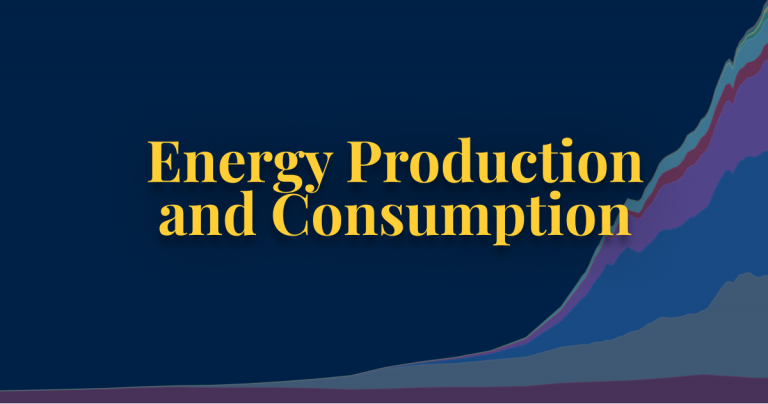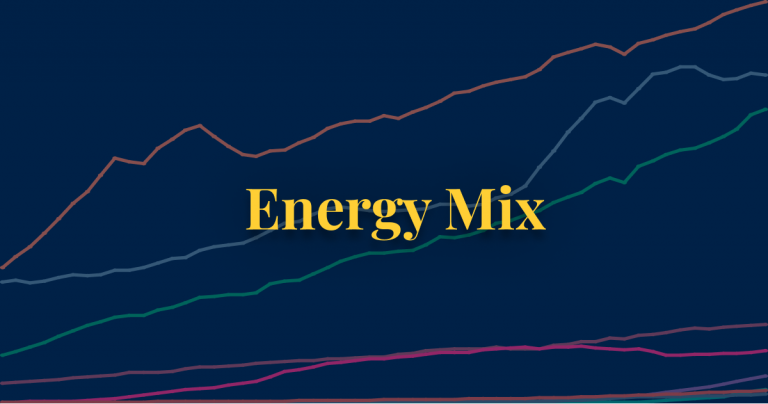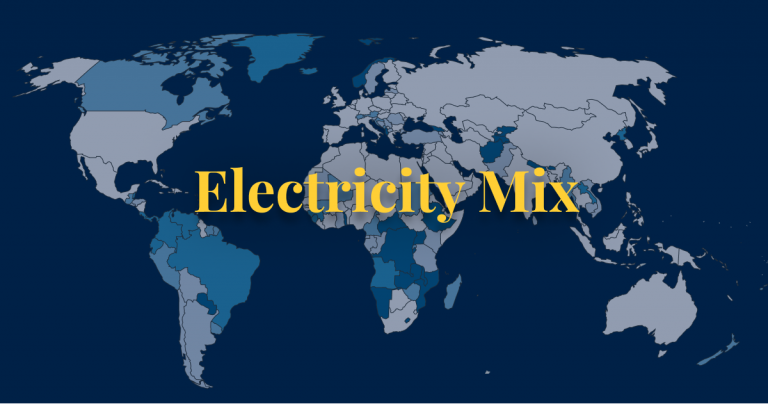The availability of energy has transformed the course of humanity over the last few centuries. Not only have new sources of energy been unlocked – first fossil fuels, followed by a diversification to nuclear, hydropower and now other renewable technologies – but also in the quantity we can produce and consume.
This article focuses on the quantity of energy we consume – looking at total energy and electricity consumption; how countries compare when we look at this per person; and how energy consumption is changing over time.
In our pages on the Energy Mix and Electricity Mix we look in more detail at what sources provide this energy.
In the energy domain, there are many different units thrown around – joules, exajoules, million tonnes of oil equivalents, barrel equivalents, British thermal units, terawatt-hours, to name a few. This can be confusing, and make comparisons difficult. So at Our World in Data we try to maintain consistency by converting all energy data to watt-hours. We do this to compare energy data across different metrics and sources.
How much energy does the world consume?
Related content:
The energy system has transformed dramatically since the Industrial Revolution. We see this transformation of the global energy supply in the interactive chart shown here. It graphs global energy consumption from 1800 onwards.
It is based on historical estimates of primary energy consumption from Vaclav Smil, combined with updated figures from BP’s Statistical Review of World Energy.1
Note that this data presents primary energy consumption via the ‘substitution method’. The ‘substitution method’ – in comparison to the ‘direct method’ – attempts to correct for the inefficiencies (energy wasted as heat during combustion) in fossil fuel and biomass conversion. It does this by correcting nuclear and modern renewable technologies to their ‘primary input equivalents’ if the same quantity of energy were to be produced from fossil fuels. We look at these two methodologies, how they differ, and what effect this has on energy statistics in detail here. You also find the same data presented in its ‘direct primary equivalents’ in the related chart underneath.
How is global energy consumption changing year-to-year?
Demand for energy is growing across many countries in the world, as people get richer and populations increase.
If this increased demand is not offset by improvements in energy efficiency elsewhere, then our global energy consumption will continue to grow year-on-year. Growing energy consumption makes the challenge of transitioning our energy systems away from fossil fuels towards low-carbon sources of energy more difficult: new low-carbon energy has to meet this additional demand and try to displace existing fossil fuels in the energy mix.
This interactive chart shows how global energy consumption has been changing from year-to-year. The change is given as a percentage of consumption in the previous year.
We see that global energy consumption has increased nearly every year for more than half a century. The exceptions to this are in the early 1980s, and 2009 following the financial crisis.
Global energy consumption continues to grow, but it does seem to be slowing – averaging around 1% to 2% per year.
Total energy consumption
How much energy do countries across the world consume?
This interactive chart shows primary energy consumption country-by-country. It is the sum of total energy consumption, including electricity, transport and heating. We look at electricity consumption individually later in this article.
Note, again, that this is based on primary energy via the ‘substitution method’: this means nuclear and renewable energy technologies have been converted into their ‘primary input equivalents’ if they had the same levels of inefficiency as fossil fuel conversion.
To maintain consistency with all of the other energy data we present, we have converted primary energy into terawatt-hours (rather than million tonnes of oil equivalents, or alternative energy units).
Three tips on how to interact with this map
- By clicking on any country on the map you see the change over time in this country.
- By moving the time slider (below the map) you can see how the global situation has changed over time.
- You can focus on a particular world region using the dropdown menu to the top-right of the map.
Per capita: where do people consume the most energy?
When we look at total energy consumption, differences across countries often reflect differences in population size: countries with lots of people inevitably consume more energy than tiny countries.
How do countries compare when we look at energy consumption per person?
This interactive chart shows per capita energy consumption. We see vast differences across the world.
The largest energy consumers include Iceland, Norway, Canada, the United States, and wealthy nations in the Middle East such as Oman, Saudi Arabia and Qatar. The average person in these countries consumes as much as 100 times more than the average person in some of the poorest countries.2
In fact, the true differences between the richest and poorest might be even greater. We do not have high-quality data on energy consumption for many of the world’s poorest countries. This is because they often use very little commercially-traded energy sources (such as coal, oil, gas, or grid electricity) and instead rely on traditional biomass – crop residues, wood and other organic matter that is difficult to quantify. This means we often lack good data on energy consumption for the world’s poorest.
Where is energy consumption growing or falling?
Globally, primary energy consumption has increased nearly every year for at least half a century. But this is not the case everywhere in the world.
Energy consumption is rising in many countries where incomes are rising quickly and the population is growing. But in many countries – particularly richer countries trying to improve energy efficiency – energy consumption is actually falling.
This interactive chart shows the annual growth rate of energy consumption. Positive values indicate a country’s energy consumption was higher than the previous year. Negative values indicate its energy consumption was lower than the previous year.
Total electricity generation: how much electricity does each country generate?
We previously looked at total energy consumption. This is the sum of energy used for electricity, transport and heating.
Although the terms ‘electricity and ‘energy’ are often used interchangeably, it’s important to understand that electricity is just one component of total energy consumption.
Let’s take a look at electricity data. This interactive chart shows the amount of electricity generated by country each year.
Per capita: which countries generate the most electricity?
Just as with total energy, comparisons on levels of electricity generation often reflect population size. It tells us nothing about how electricity the average person in a given country consumes relative to another.
This interactive chart shows per capita electricity generation per person. Again we see vast difference in electricity per person across the world. The largest producers – Iceland, Norway, Sweden and Canada – generate 100s of times as much electricity as the smallest.
In many of the poorest countries in the world, people consume very little electricity, which estimates lower than 100 kilowatt-hours per person in some places.
This page focuses on total energy and electricity consumption, without digging into the details on where this energy comes from, and how sources are changing over time.
In our pages on the Energy Mix and Electricity Mix, we look at full breakdowns of the energy system; how much of our energy comes from fossil fuels versus low-carbon sources; and whether we’re making progress on decarbonization.














